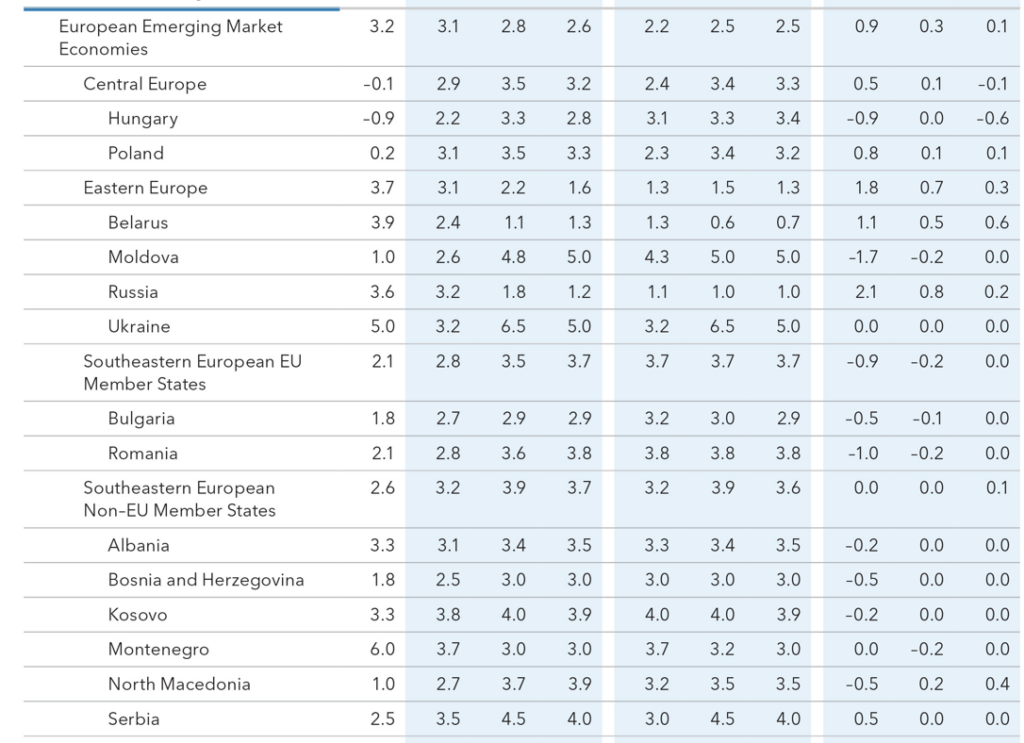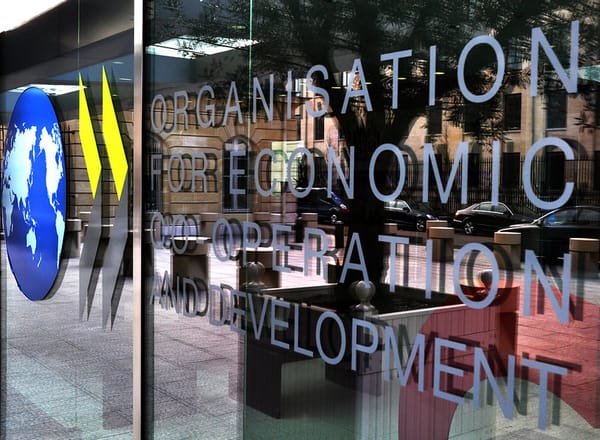
IMF report shows CEE catching up on southern European neighbours
Per capita income in Slovenia will surpass that of Italy by 2029 when adjusted for purchasing power (PPP), according to the latest International Monetary Fund (IMF) projections, while Lithuania will draw level and Poland will not be far behind.
The shift makes good on promises that the Central and Eastern Europe (CEE) nations that became EU members in 2004 would grow closer to the bloc’s richer west, according to the report. That process didn’t happen as rapidly as envisaged, with convergence suffering repeated setbacks from the volatile 1990s to 2008’s global crash and ensuing debt crisis, the fund added.
The growth projections for the Baltics, Balkans, and Visegrad Group (V4) as delineated in the IMF report reveal distinct trajectories shaped by regional strategies and global economic conditions. A video by the IMF is available here.
Visegrad Four moving to higher value economies
The Visegrad Four (V4) countries of Poland, Hungary, Czechia and Slovakia, are increasingly looking at innovation and industrial competitiveness to transition to higher value-added economies, according to the IMF.
Poland is focusing on industrial production and sustainable energy in a bid for long-term economic resilience. Hungary, while facing external and political challenges, continues to innovate in industries such as automotive and electronics to maintain economic growth.
Czechia’s investment in technology aims to sustain its industrial base and export potential. Slovakia, recognising the challenges posed by an ageing workforce, is exploring ways to optimise its labour market and enhance the productivity of its key sectors including auto, the Fund wrote.
Czechia and Slovakia are expected by the IMF to show robust growth, capitalising on strong industrial and technological capabilities. These countries are focusing on boosting productivity and enhancing their economic competitiveness to stay ahead in the fast-evolving European landscape.
Meanwhile, Hungary and Poland are anticipated to maintain stable growth rates. Poland, in particular, is expected to benefit significantly from its strategic investments in renewable energy and the expansion of its digital economy, setting a model for sustainable development within the V4.
These projections underscore efforts to adapt to both internal challenges and external economic pressures. Each region’s growth prospects are tied to a mix of strategic reforms, investment in key sectors, and the broader geopolitical and economic environment, the IMF concluded.

Baltics move further into tech, logistics
The Baltic states are adapting to an evolving European economic landscape. Estonia is focusing on training its labour force to meet the high technology sector demand, which is central to its economic strategy. Latvia, with its strategic initiatives in transport and logistics, aims to strengthen its role as a key transit hub in Northern Europe while addressing energy security concerns. Meanwhile Lithuania, with its diversified economic base, is seeking to mitigate geopolitical risks that could impact its economic stability, the IMF wrote.
According to the IMF, Estonia, Latvia, and Lithuania are poised to maintain stable growth, underpinned by strong technological sectors and strategic advancements in logistics. The Baltic countries are leveraging competitive advantages to ensure sustainable economic expansion despite global uncertainties.
Tourism development crucial in Balkans
The Balkan region is aiming to overcome economic hurdles through targeted reforms and strategic development, the Fund wrote. Albania, with its focus on infrastructure, is seeking to boost connectivity and efficiency in order to attract foreign investment and foster growth. Bosnia and Herzegovina’s political landscape poses a challenge to economic stability, requiring careful management and international cooperation, however, and may face slower growth due to ongoing instability, which poses risks to investment.
Kosovo is working at lowering its unemployment rate through economic diversification efforts Kosovo and could achieve growth improvements, contingent on its effective management of these.
Meanwhile, Montenegro and North Macedonia are leveraging their natural and cultural resources to turn tourism from a summer industry to a more stable year-round one. Serbia’s infrastructure improvements are part of a broader strategy to enhance its competitive edge and integrate more deeply with European markets, according to the IMF.
Croatia, Greece, Bulgaria, and Romania are intensifying efforts in pivotal economic sectors including tourism, shipping, and agriculture. The Balkan countries are also investing in technology and renewable energy to create sustainable growth models that align with EU standards and goals.
Albania and North Macedonia are forecast for moderate growth, primarily driven by infrastructural development. Serbia and Montenegro are also on paths to growth, particularly through their tourism and energy sectors.






